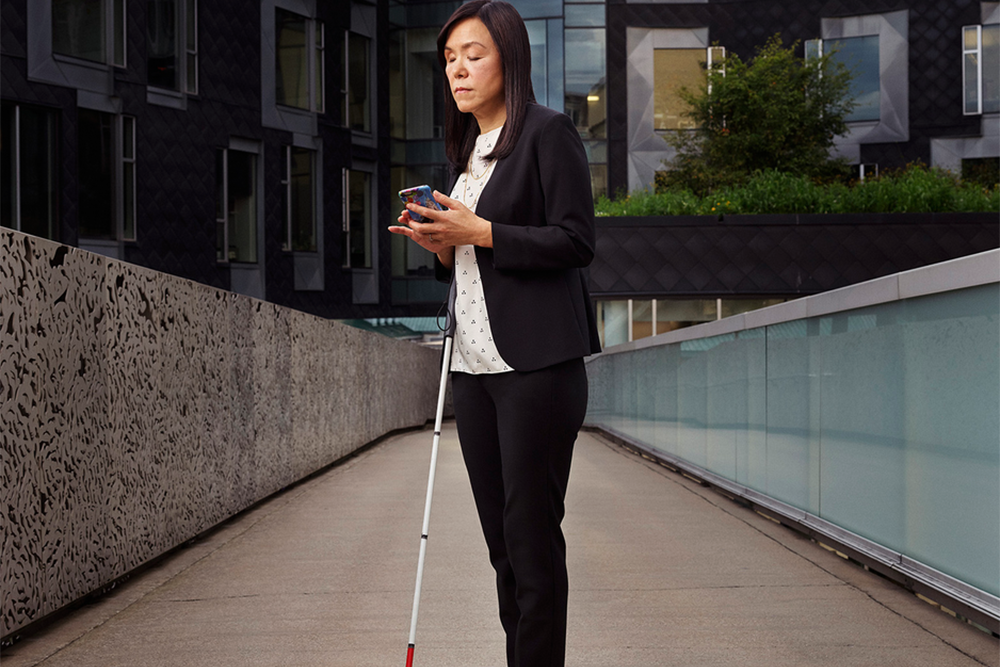Latest News
Chieko Asakawa: When Motivation Meets Determination
By Margaret Popper For IBM Fellow Chieko Asakawa, necessity was definitely the mother of invention. In 1982, as a new graduate of Otemon Gakuin University in Osaka, she was not thrilled by the...
By Margaret Popper
For IBM Fellow Chieko Asakawa, necessity was definitely the mother of invention. In 1982, as a new graduate of Otemon Gakuin University in Osaka, she was not thrilled by the career choices open to English literature majors—particularly blind ones. Asakawa had lost her eyesight as a teenager as the result of a swimming pool accident.
“The most common jobs for the blind in Japan were acupuncture and massage,” Asakawa recalls. When she heard about a two-year computer training program for blind people, she jumped at the chance.
At school she used an Optacon to translate printed text to vibrations she could read with her fingertips. “You put your left index finger into a machine that had a vibration board,” she says. “In your right hand you held a camera that read what was on the screen, or paper.” The camera had to be kept moving, and it wasn’t terribly exact—an “O” or a “C” might feel the same when translated to vibrations on a fingertip.
 IBMIBM Master Inventor Chieko Asakawa's innovations include an app that helps blind people navigate public spaces by using their smartphones.
IBMIBM Master Inventor Chieko Asakawa's innovations include an app that helps blind people navigate public spaces by using their smartphones.
“In those days, I had no idea a person like me could become an inventor,” Asakawa says. But at the end of the program, she got a job with IBM Tokyo’s research group to help create a computer that would translate text from English to Braille. She moved to Tokyo to live on her own for the first time.
The Power of Peers
At IBM Asakawa used a Braille printer and a device that could read aloud what she typed on the screen. “I became much more effective,” she says. “My peers around me were not on the same team, but we were the same age. They were computer scientists, and they taught me how to do research.” They also introduced her to the process of getting recognition for her work by publishing papers, writing patents and making presentations.
Encouraged by friends, Asakawa drilled deeper into research. Her lab digitized Braille, creating a word processor that translated digitized text into Braille so that it could be printed. Before this invention, Braille had to be typed on special paper, and edits or corrections were practically impossible. This breakthrough led to the creation of a digital library for Braille documents.
Continuing her efforts to improve visually impaired people’s access to written documents, Asakawa began developing software that could work with a web browser to convert text to speech. Asakawa demonstrated the system to Paul Horn, then director of IBM global labs, who was visiting the Tokyo laboratory. Horn introduced her to a team that researched the potential for productization of IBMers’ inventions, and found that nothing like Asakawa’s software existed in the U.S. Asakawa pursued and was awarded a patent for her invention in 2001. Her idea was developed into an IBM product called IBM Home Page Reader, available in the U.S. and Japan and, eventually, in 11 languages.
“That’s the beauty of IBM,” says Asakawa. “I just wanted to develop a home page reader. But IBM helped me start contributing to a better world. Home Page Reader was a real turning point for me. My vision got much wider, much deeper.”
A Hall of Fame Career
Encouraged by her success, Asakawa went on to get her PhD in computer science from the University of Tokyo. “It was easy,” she deadpans. “I worked from nine to five, so I had all night and the weekends to study!” She says her daughters, who were around ages 10 and 15 at the time, helped her keep the household running.
Receiving her PhD in 2004 was another turning point for Asakawa. It gave her the confidence to set her sights on becoming a technical leader.
IBM has a culture that respects each person’s own perspective. It’s a culture of listening, discussion and thinking about ideas together.
During this process she acquired new mentors, including Nick Donofrio, now retired, who eventually became executive vice president of innovation and technology, and John E. Kelly III, currently the IBM executive vice president who oversees intellectual property. They encouraged her to take on the increased management responsibilities that would help her achieve her goal. She became an IBM Fellow in 2009.
Last year, Asakawa was inducted into the U.S. National Inventors Hall of Fame for the invention of Home Page Reader. While still an IBM Fellow at the T.J. Watson Research Center, she is currently working in Pittsburgh as the IBM Distinguished Service Professor at Carnegie Mellon University.
Her more recent work includes collaboration with IBM partners through Carnegie Mellon. She helped to design Navcog, an app that helps blind people navigate public spaces by using their smartphones to connect to sensors placed around an indoor environment. The system was deployed at Carnegie Mellon, the Pittsburgh airport and a shopping mall in Japan. She is working with a group to take this technology one step further with AI Suitcase, which could eliminate the need for Bluetooth beacons to enable visually impaired navigation of an environment.
“IBM has a culture that respects each person’s own perspective. It’s a culture of listening, discussion and thinking about ideas together,” Asakawa says. “When I started working for IBM, my blindness became my strength.”